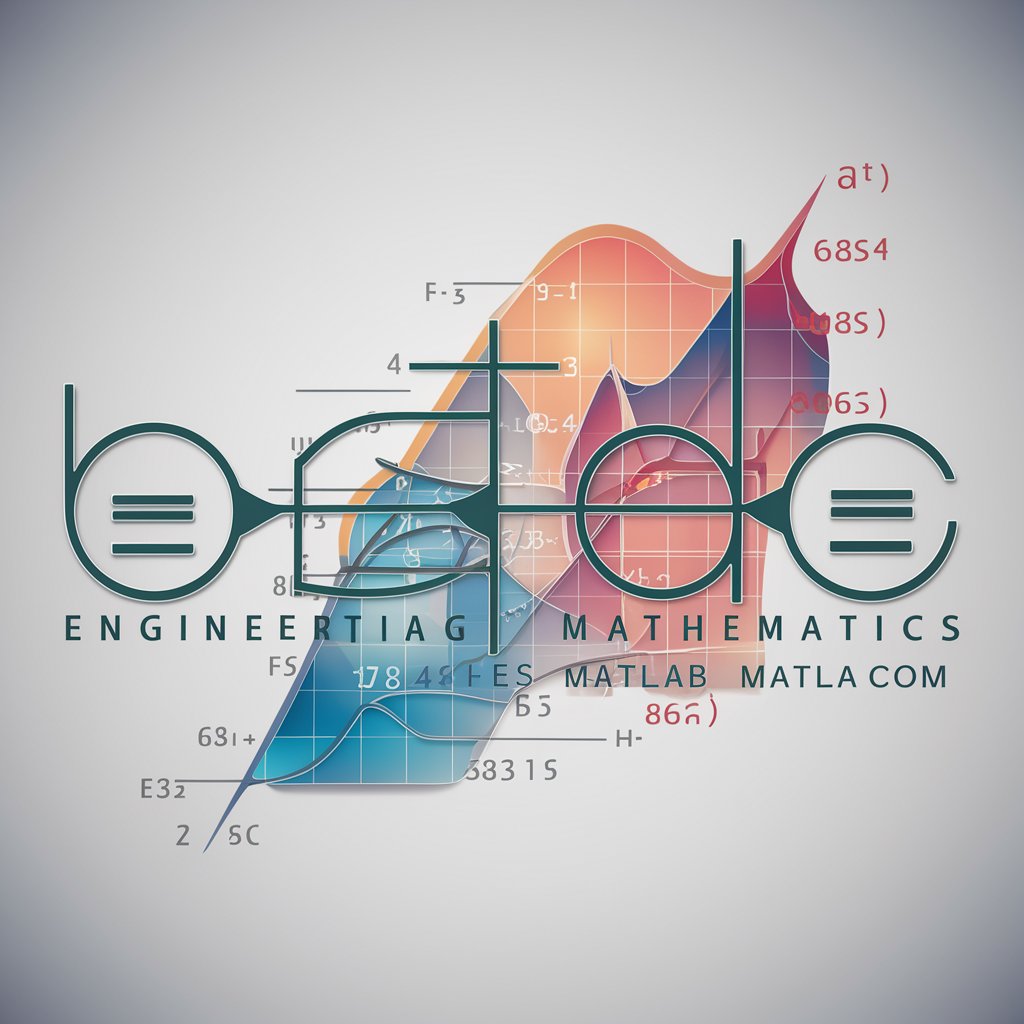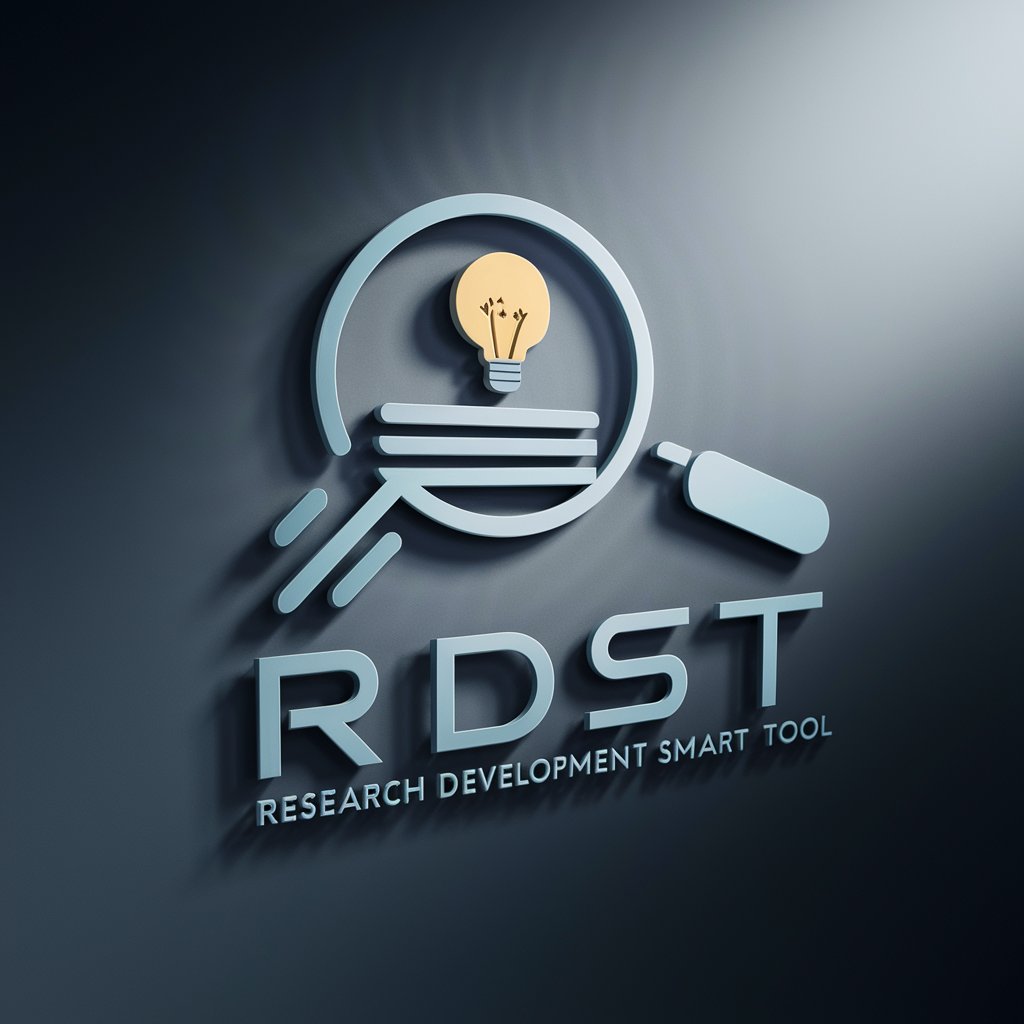Differential Equations - trial available for Differential Equations with no login required. Understand basics, learn solution methods, and apply to real-world problems.

Welcome to your differential equations guide.
Empowering problem-solving with AI-driven Differential Equations
Explore the applications of differential equations in engineering by...
Utilize MATLAB to solve complex linear algebra problems such as...
Investigate the methods for solving first-order differential equations using...
Learn how to implement Euler's method in MATLAB by...
Get Embed Code
Introduction to Differential Equations
Differential Equations (DEs) are mathematical equations that relate some function with its derivatives. They are fundamental in expressing the dynamics and changes in various scientific and engineering fields, encapsulating how a particular quantity changes over time or space. For example, in physics, the motion of waves or quantum mechanics, and in finance, the modeling of compound interest rates. An ordinary differential equation (ODE) involves derivatives with respect to only one variable, whereas a partial differential equation (PDE) involves derivatives with respect to multiple variables. An example scenario is the population growth model, described by the ODE dy/dt = ry, where y is the population size, t is time, and r is the growth rate. Powered by ChatGPT-4o。

Main Functions of Differential Equations
Modeling Change
Example
Population dynamics can be modeled using the logistic differential equation dy/dt = r*y*(1 - y/K), where K is the carrying capacity.
Scenario
Ecologists use this to predict changes in population sizes, consider resource limits, and plan conservation efforts.
Describing Physical Systems
Example
Newton's second law of motion often leads to a differential equation: F = ma = m(d^2x/dt^2), where m is mass, a is acceleration, and x is position.
Scenario
Engineers use such equations to design mechanical systems under various forces.
Engineering Control Systems
Example
The control of a vehicle's speed can be represented by a first-order DE, dx/dt = k*(v - x), where x is the output speed, v is the desired speed, and k is a gain constant.
Scenario
Automotive engineers design cruise control systems using such models to maintain stability and comfort.
Ideal Users of Differential Equations
Academic Researchers
Researchers in mathematics, physics, and engineering use DEs to explore complex systems and phenomena such as fluid dynamics, heat transfer, or cosmological evolution.
Industrial Engineers
Use DEs to model, design, and optimize real-world systems like electrical circuits, mechanical systems, or chemical processes, ensuring efficiency and safety.
Financial Analysts
Apply DEs in quantitative finance to model the behavior of options pricing, risk management, or investment strategies under varying market conditions.

Using Differential Equations
Visit yeschat.ai for a free trial without login, also no need for ChatGPT Plus.
Yeschat.ai offers a free trial of Differential Equations without the need for login or ChatGPT Plus subscription.
Understand the basics
Familiarize yourself with the fundamental concepts of calculus, including derivatives and integrals, as well as algebraic manipulation techniques.
Learn the different types of differential equations
Study ordinary differential equations (ODEs) and partial differential equations (PDEs), as well as their classifications based on order, linearity, and homogeneity.
Master solution methods
Explore various solution techniques such as separation of variables, integrating factors, Laplace transforms, and numerical methods like Euler's method and Runge-Kutta methods.
Apply differential equations to real-world problems
Practice solving problems from diverse fields including physics, engineering, biology, economics, and chemistry to understand the practical applications of differential equations.
Try other advanced and practical GPTs
Laravel TALL Stack
Empower your web projects with AI.

pcap network data analysis
Unleash AI-powered network insights

Rewriter
Revise effortlessly with AI-powered Rewriter.

Rewriter
Rewriter: Transforming Text with AI

Map
AI-powered assistant for all your needs.

Marketing Magui
Empowering Marketing with AI Insights

Research Development Smart Tool (RDST)
Empowering researchers with AI-driven support.

Prospect Finder
Unlock Business Opportunities with AI

Organize my Life
Streamline your life with AI-powered scheduling.

General / Personal Writing Assistant
Elevate Your Writing with AI Precision

University Application SOP
Crafting Your Academic Future with AI

Tube Quiz Creator
Empower Learning with AI-Powered Quizzes

Differential Equations Q&A
What are ordinary differential equations (ODEs)?
ODEs involve functions of a single variable and their derivatives. They are fundamental in modeling phenomena that vary continuously.
How are partial differential equations (PDEs) different from ODEs?
PDEs involve functions of multiple variables and their partial derivatives. They are used to describe phenomena involving multiple independent variables.
What are some common applications of differential equations?
Differential equations are used extensively in physics (e.g., motion of objects), engineering (e.g., circuit analysis), biology (e.g., population dynamics), economics (e.g., modeling economic systems), and chemistry (e.g., reaction kinetics).
What are the main solution techniques for differential equations?
Solution methods include separation of variables, integrating factors, Laplace transforms, and numerical methods like Euler's method and Runge-Kutta methods.
How do differential equations relate to real-world problems?
Differential equations provide a mathematical framework for understanding and modeling various real-world phenomena, allowing for predictions and analysis in fields ranging from engineering to biology.
